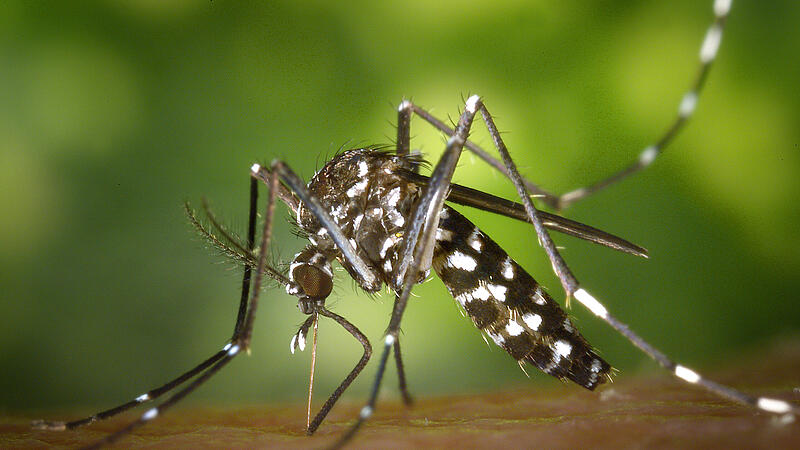Image: JAMES GATHAN (APA/JAMES GATHAN)
According to AGES, in parts of Vienna and Graz there are already established populations that can survive the winter with us. Asian tiger mosquitoes (Aedes albopictus) are potential vectors of over 20 different pathogens. Many of them, such as Dengue, Zika or Chikungunya, cannot be transmitted by native mosquito species. Although these pathogens have not yet been found in Austria, in the case of the Chikungunya virus, the European Center for Disease Prevention and Control (ECDC) assumes that there is a high probability of its being introduced into Europe, AGES reported on Wednesday.
Mosquito surveillance is becoming increasingly important. In cooperation with the federal states, universities and associations, AGES carries out so-called Ovitrap monitoring throughout Austria on behalf of the Ministry of Health from the beginning of May to the end of October. Ovitraps are traps that are checked weekly for egg clutches of different mosquito species. These traps are mainly placed in urban areas and in places where alien species may be introduced into the country, such as highway rest stops.
It is usually significantly warmer in cities than in the surrounding areas, which favors the survival of tiger mosquito populations over the winter. In Vienna, for example, the Asian tiger mosquito is introduced by long-distance traffic, especially in the south-eastern green belt area or at individual inner-city long-distance bus stops. Since the first sighting in 2020, tiger mosquitoes have hibernated there and spread further into neighboring residential areas and garden settlements.
Citizens can also provide information about the presence of tiger mosquitoes via the “Mosquito Alert” app. This allows possible tiger mosquitoes to be reported via photo. The submitted images are examined by national and international experts and the finds are displayed on a publicly accessible map.
Tiger mosquitoes are so-called “container breeders” and prefer the smallest water holes to lay their eggs. In their natural environment, these are mainly tree cavities, in urban areas these can be all kinds of vessels in which water collects, such as rain barrels, bird baths, watering cans, gullies, clogged gutters, flower vases, plant coasters, buckets, cans, bottles or glasses . According to AGES, car tires stored outside with accumulated rainwater are particularly attractive.
A female lays about 40 to 90 eggs per egg-laying cycle, which she distributes to different water bodies. Adult tiger mosquitoes develop about 10 to 15 days after the larvae hatch. Tiger mosquito eggs are very hardy and can survive months of drought and cooler temperatures, including winter, before hatching.
It is therefore particularly important to eliminate possible breeding grounds for the tiger mosquito. AGES emphasized that everyone can help with this. For example, small water points such as bird baths or flower mats should be emptied at least once a week, and small water points such as umbrella stands, fence posts, indentations in branch forks or decorative elements should be covered or filled with sand.
Items that can collect water, such as watering cans, tires, or empty flower boxes, should be turned upside down or stored on the roof. It is best to close rain barrels or cover them with a fine-meshed insect screen and avoid clogged gutters.
Source: Nachrichten




